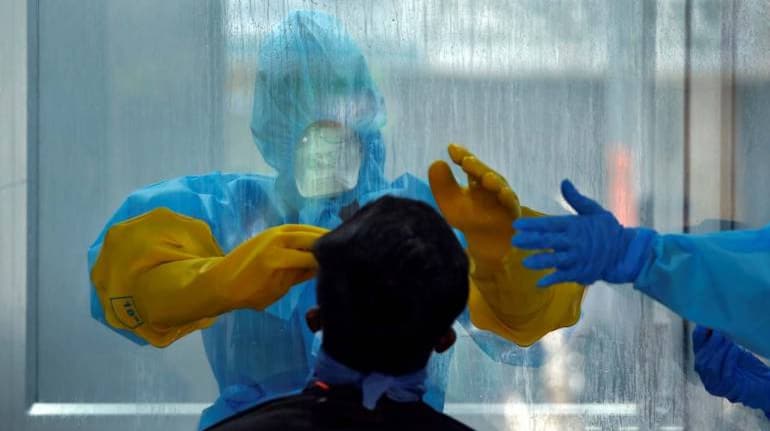



The high COVID-19 mortality rate in Gujarat could be due to the dominance of the L-type strain of coronavirus, found to have been more prevalent in Wuhan in China, where the outbreak started, experts said.
The dominance of the more virulent L-type coronavirus strain as compared to the S-type one could be behind the high mortality rate in the state, which has reported 133 deaths so far. However, no research has been conducted to confirm this, they said.
A scientist at the state-run Gujarat Biotechnology Research Centre (GBRC) said that the novel coronavirus used for genome sequencing recently conducted by it was found to contain the L-type strain.
"Analysis done by scientists abroad has shown that the L-type strain has been dominant where more mortality is reported among coronavirus patients. This strain was found to be more prevalent in Wuhan," director of GBRC, C G Joshi, said.
"The coronavirus sample we collected from a patient for genome sequence contained the L-type strain. This strain has a much higher virulence as compared to the S-strain," he said.
"Variation in coronavirus is in terms of number and percentage of mutations. As per the analysis, the L-type strain is dominant where more mortality is reported. Scientists have earlier found that this strain has caused more deaths," he said.
The GBRC recently succeeded in decoding the entire genome sequence of the novel coronavirus and identified its three new mutations.
Joshi added that the patient from whom the virus sample was collected for sequencing has fully recovered.
So far, no study has been conducted here to establish which strain of coronavirus is predominant inpatients here.
Atul Patel, a specialist in infectious diseases, attributed the presence of the L-type strain more than the S- type one in Gujarat is behind high mortality rate.
Patel has said that a little higher presence of the L-type strain, or the original Wuhan strain, could be behind higher death rate in the state.
The state government has also attributed the high mortality among coronavirus patients in the state to comorbidities and high-risk factors.
Heart and lung diseases, diabetes, and hypertension are among common diseases that have been found among COVID-19 patients who passed away in Gujarat.
The risk factors include patients in the age group of above over 60 years and under five years of age and pregnant women, and they account for 90 per cent of patients who passed away, Principal Secretary (Health), Jayanti Ravi had recently said.
Discover the latest Business News, Sensex, and Nifty updates. Obtain Personal Finance insights, tax queries, and expert opinions on Moneycontrol or download the Moneycontrol App to stay updated!
Find the best of Al News in one place, specially curated for you every weekend.
Stay on top of the latest tech trends and biggest startup news.